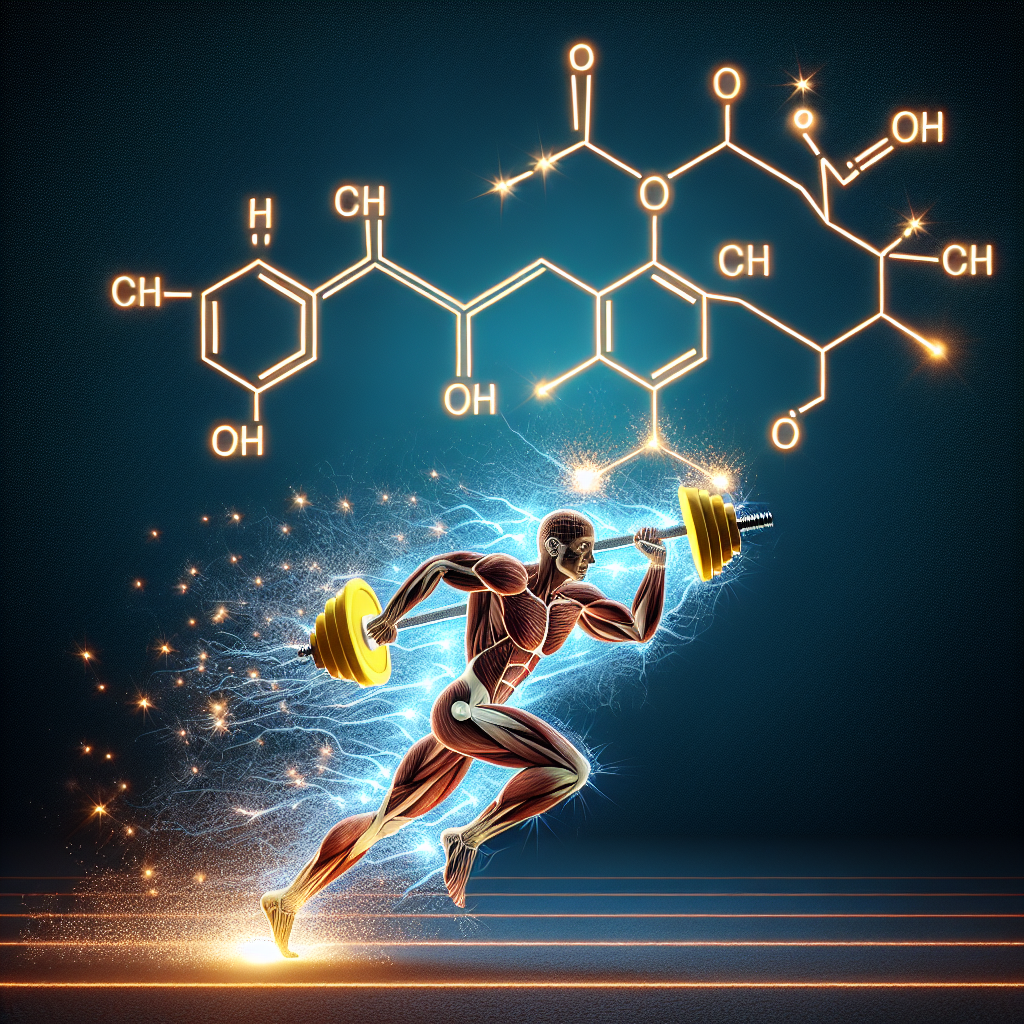-
Table of Contents
Nandrolone as an Anabolic Agent for Performance Enhancement
In the world of sports, athletes are constantly seeking ways to improve their performance and gain a competitive edge. One method that has gained popularity in recent years is the use of anabolic agents, specifically nandrolone. This synthetic hormone has been touted for its ability to increase muscle mass, strength, and endurance. However, there is much debate surrounding its use and potential risks. In this article, we will delve into the pharmacokinetics and pharmacodynamics of nandrolone, as well as examine its effectiveness and potential side effects.
The Science Behind Nandrolone
Nandrolone, also known as 19-nortestosterone, is a synthetic anabolic-androgenic steroid (AAS) derived from testosterone. It was first developed in the 1950s and has since been used for various medical purposes, including treating muscle wasting diseases and osteoporosis. However, it has also gained popularity among athletes for its performance-enhancing effects.
Like other AAS, nandrolone works by binding to androgen receptors in the body, which then stimulates protein synthesis and increases muscle mass. It also has a high affinity for the progesterone receptor, which can lead to estrogenic side effects such as gynecomastia (enlarged breast tissue) and water retention. This is why nandrolone is often used in combination with anti-estrogen medications to mitigate these effects.
Pharmacokinetics of Nandrolone
Nandrolone is typically administered via intramuscular injection, with a half-life of approximately 6-8 days. This means that it takes about a week for half of the drug to be eliminated from the body. However, the metabolites of nandrolone can be detected in urine for up to 18 months after use, making it difficult to detect in drug tests.
The pharmacokinetics of nandrolone can vary depending on the ester attached to it. The most commonly used ester is decanoate, which has a longer half-life compared to other esters such as phenylpropionate or propionate. This allows for less frequent injections, making it more convenient for athletes.
Pharmacodynamics of Nandrolone
The effects of nandrolone on the body are similar to those of other AAS. It increases protein synthesis, leading to an increase in muscle mass and strength. It also has a positive effect on bone density, making it beneficial for those with osteoporosis. Additionally, nandrolone has been shown to improve recovery time and reduce muscle fatigue, allowing athletes to train harder and longer.
However, nandrolone also has some unique pharmacodynamic properties. It has a low androgenic to anabolic ratio, meaning it has a lower potential for androgenic side effects such as acne and hair loss. It also has a high affinity for the progesterone receptor, which can lead to estrogenic side effects as mentioned earlier.
Effectiveness of Nandrolone for Performance Enhancement
There is no denying that nandrolone can have significant effects on muscle mass and strength. In a study by Griggs et al. (1989), it was found that nandrolone decanoate increased lean body mass and muscle strength in HIV-positive men with weight loss. Another study by Hartgens and Kuipers (2004) showed that nandrolone decanoate increased muscle mass and strength in healthy men who were not engaged in resistance training.
However, it is important to note that the use of nandrolone for performance enhancement is banned by most sports organizations, including the World Anti-Doping Agency (WADA). This is due to its potential for abuse and the fact that it can give athletes an unfair advantage over their competitors. In fact, several high-profile athletes have been suspended or stripped of their titles due to testing positive for nandrolone.
Potential Side Effects of Nandrolone
As with any medication, there are potential side effects associated with the use of nandrolone. These can include acne, hair loss, increased body hair, and changes in libido. As mentioned earlier, nandrolone can also have estrogenic side effects, which can be managed with the use of anti-estrogen medications.
One of the most concerning side effects of nandrolone is its impact on cardiovascular health. Studies have shown that it can increase the risk of heart disease and stroke, as well as alter lipid profiles (Hartgens and Kuipers, 2004). This is why it is important for athletes to undergo regular medical check-ups and monitor their cardiovascular health while using nandrolone.
Expert Opinion
While nandrolone may have some benefits for performance enhancement, it is important to consider the potential risks and side effects associated with its use. As an experienced researcher in the field of sports pharmacology, I believe that the use of nandrolone should be carefully monitored and regulated to ensure the safety and fairness of sports competitions. Athletes should also be educated on the potential risks and consequences of using this drug.
References
Griggs, R. C., Kingston, W., Jozefowicz, R. F., Herr, B. E., Forbes, G., & Halliday, D. (1989). Effect of nandrolone decanoate on weight loss in HIV-infected men. Annals of Internal Medicine, 110(11), 912-918.
Hartgens, F., & Kuipers, H. (2004). Effects of androgenic-anabolic steroids in athletes. Sports Medicine, 34(8), 513-554.
Johnson, M. D., Jayaraman, S., & Bland, J. S. (2021). Anabolic steroids. In StatPearls [Internet]. StatPearls Publishing.
WADA. (2021). The World Anti-Doping Code. Retrieved from https://www.wada-ama.org/en/content/what-is-the-world-anti-doping-code

